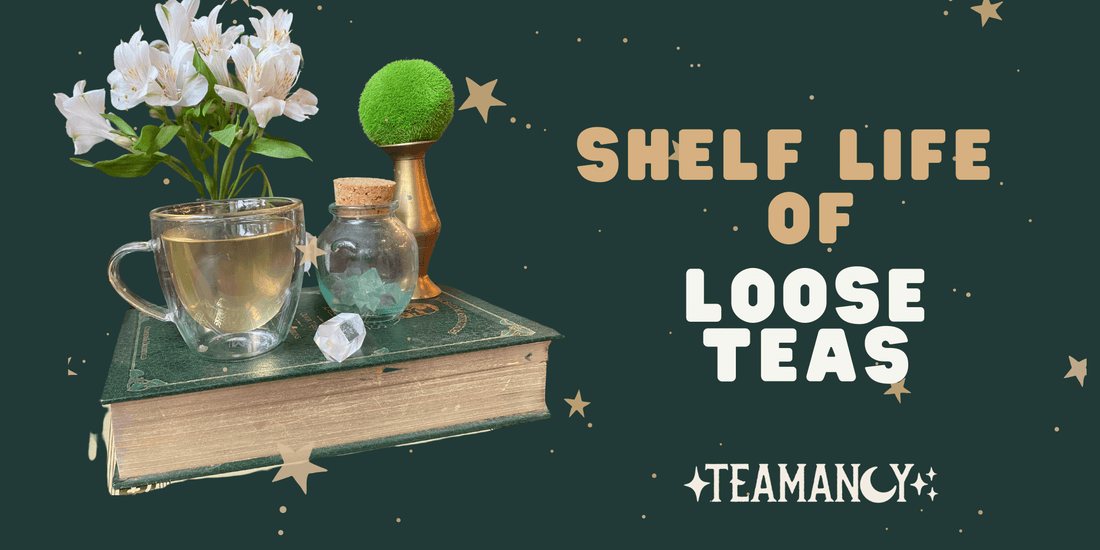
What is the shelf life of loose leaf tea?

In the serene and aromatic world of tea, understanding the shelf life of loose leaf tea is essential for both connoisseurs and casual drinkers. At Teamancy, we're dedicated to helping you navigate the nuances of tea storage, ensuring that each brew captures the essence and flavor of its leaves. The shelf life of loose leaf tea is a topic rich with detail, influenced by various factors from the type of tea to how it's stored. Let's explore this further.
The Basics of Tea Shelf Life
Loose leaf tea doesn't spoil in the way perishable food does, but it does age, losing its vibrant flavors and aromas over time. The shelf life of tea can vary significantly, influenced by the type of tea, its processing, and storage conditions. Understanding these variables can help you maintain the quality of your tea for as long as possible.
Tea Type and Its Impact
-
Green and White Teas: These teas are known for their delicate flavors and are less processed. They typically have a shorter shelf life, ranging from 6 to 12 months.
-
Oolong Teas: As a semi-oxidized tea, oolong has a longer shelf life than green or white teas, usually around 1 to 2 years.
-
Black Teas: Fully oxidized, black teas are more robust and have a longer shelf life, often lasting 2 years or more.
-
Pu-erh Teas: Unique in the tea world, pu-erh teas are fermented and can improve with age, much like wine, extending their shelf life beyond several years under proper conditions.
Key Factors Affecting Shelf Life
-
Storage Conditions: Proper storage is crucial for extending the shelf life of loose leaf tea. Exposure to air, light, humidity, and strong odors can accelerate the aging process and degrade the quality of the tea.
-
Packaging: Tea stored in airtight, opaque containers will maintain its quality longer than tea left in less ideal conditions.
-
Environment: A cool, dry, and dark environment is optimal for tea storage, protecting it from the elements that hasten aging.
Maximizing Your Tea's Freshness
To ensure your tea retains its character and quality, consider the following storage tips:
-
Airtight Containers: Invest in quality, airtight containers for your tea. Tin, ceramic, or opaque glass containers can protect tea from air and light exposure.
-
Cool and Dry Storage: Store your tea away from heat sources, moisture, and areas prone to drastic temperature changes. A pantry or cabinet away from the kitchen stove is ideal.
-
Avoid Contamination: Keep your tea away from strong-smelling foods or spices to prevent the tea from absorbing unwanted odors.
Recognizing the Signs of Aged Tea
While loose leaf tea may not spoil in the traditional sense, it does give signs when it's past its prime:
-
Loss of Aroma: A significant decrease in the tea's natural aroma is often the first sign of aging.
-
Faded Flavors: When the vibrant, nuanced flavors of the tea seem muted or diminished, it's a clear indicator that the tea is aging.
-
Changes in Appearance: Any signs of moisture, mold, or a change in the tea's color can indicate improper storage and reduced quality.
In Summary
The shelf life of loose leaf tea is a dynamic aspect of tea appreciation, influenced by a variety of factors. By understanding these elements and implementing proper storage techniques, you can greatly extend the life and enjoyment of your tea collection. At Teamancy, we believe that with a little care and attention, you can savor the finest flavors your tea has to offer, long after it's been brought home. So, treasure your teas, store them wisely, and enjoy the timeless pleasure of a well-crafted brew.
